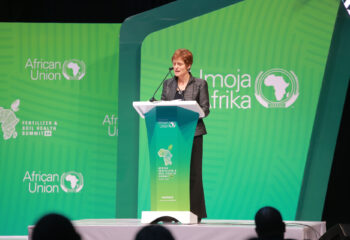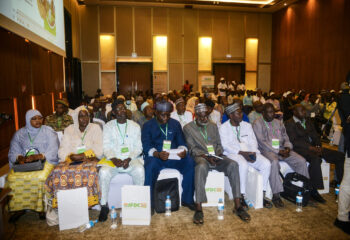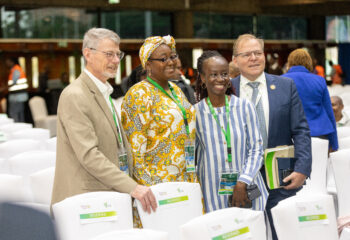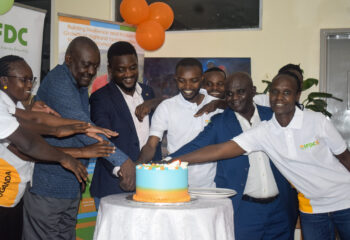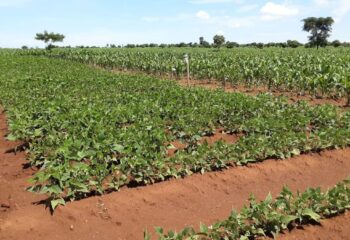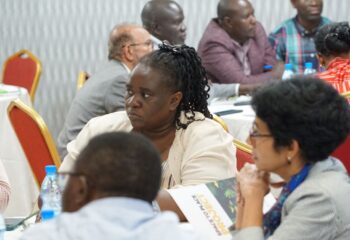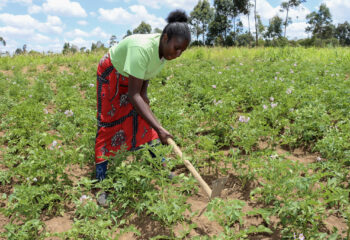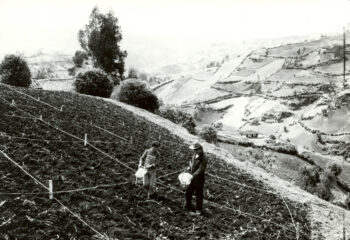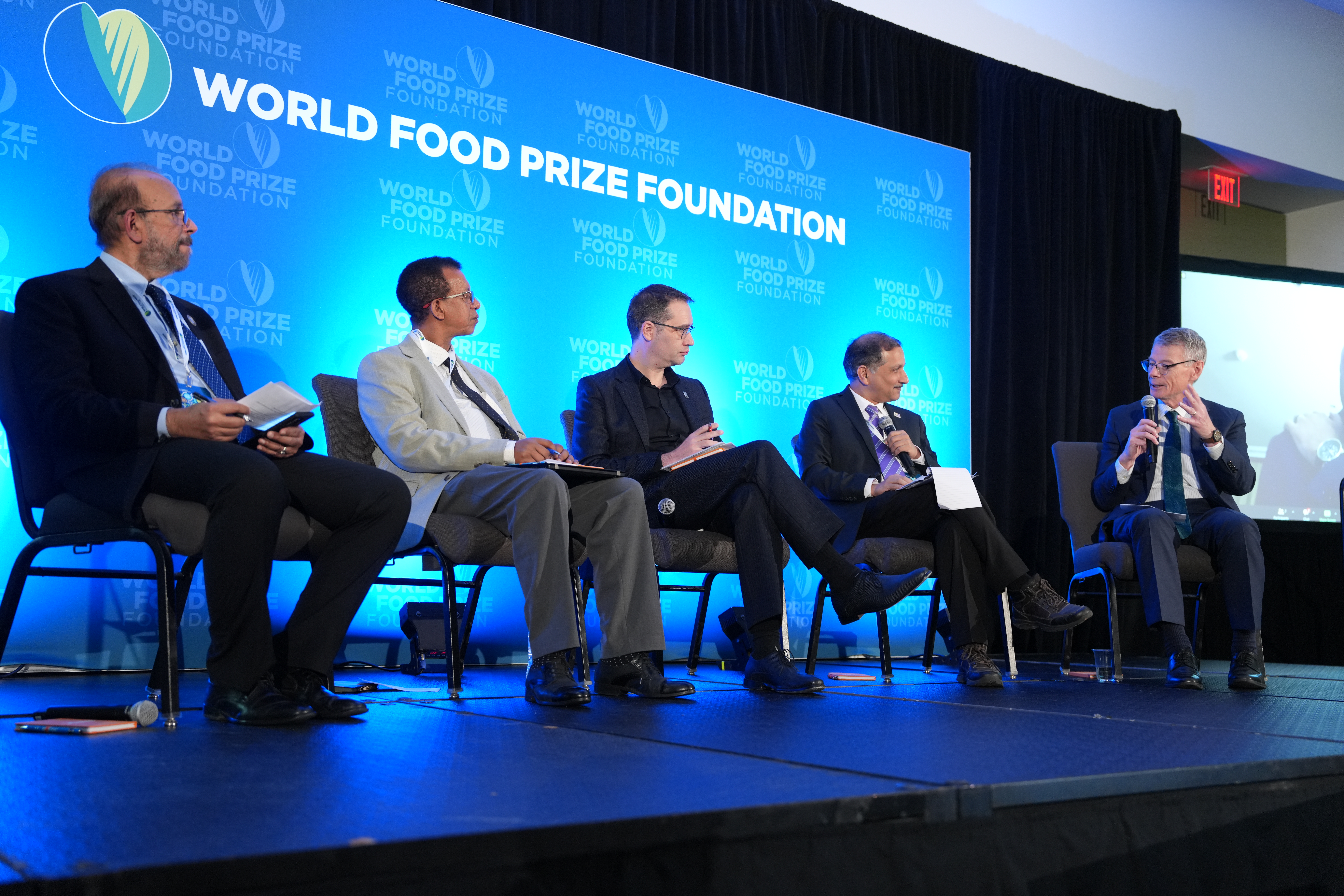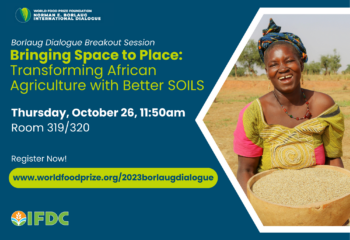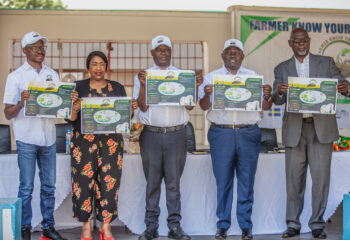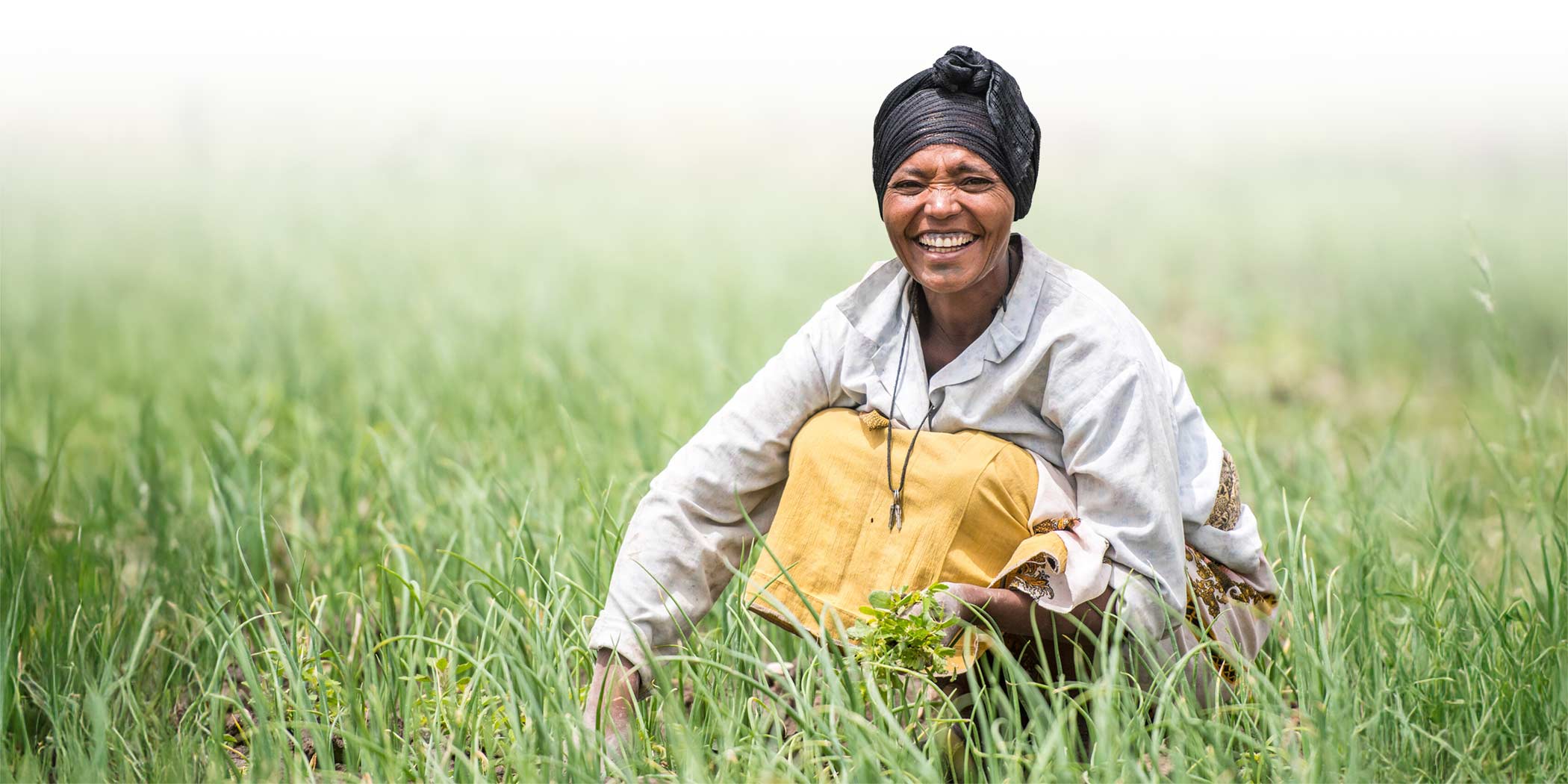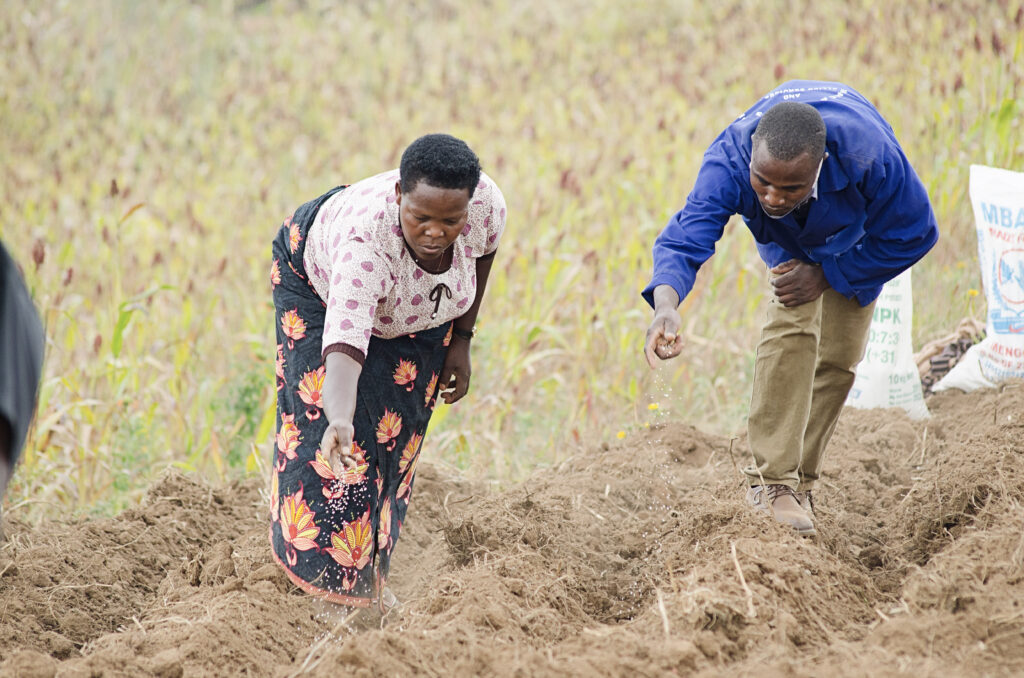
Overview
African agriculture must be ready to meet the needs of an expanding population. SOILS-Space to Place* rapidly scales innovations in efficiency to accelerate productivity. Fertilizer is a critical component of intensive and sustainable agricultural systems, allowing greater productivity from existing land under cultivation. In alignment with the U.S. Government’s Feed the Future Initiative and the Global Food Security Strategy, the U.S. Agency for International Development (USAID) is working to increase fertilizer availability, access, and efficient use in response to the current fertilizer crisis.
Fertilizer Use Efficiency
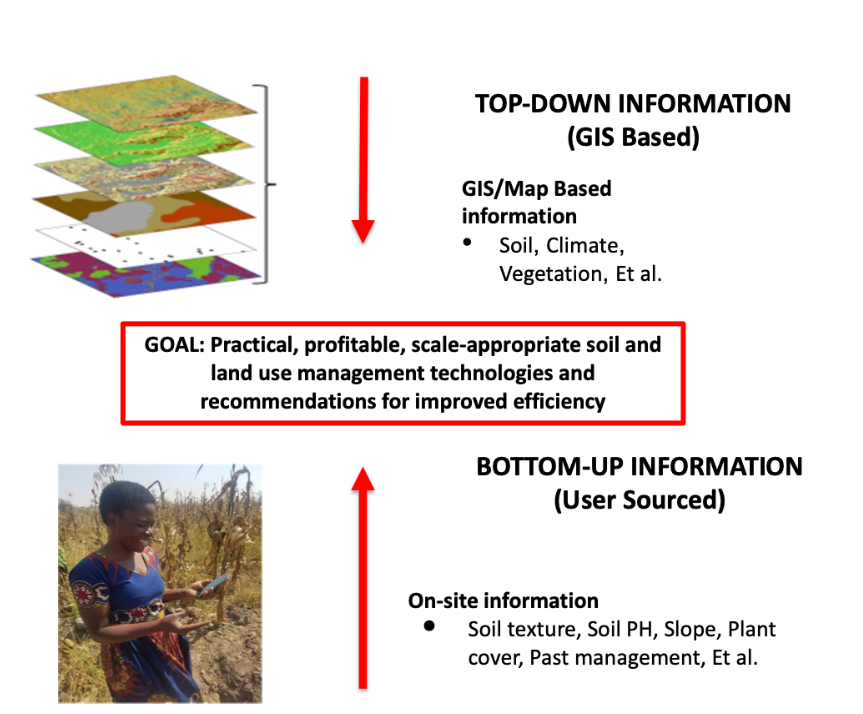
Disruptions in fertilizer access and affordability resulting from post-COVID pandemic supply chain challenges and the Russia-Ukraine war has highlighted vulnerabilities within sub-Saharan African (SSA) agricultural systems. Poor farmers affected by the global fertilizer supply crisis typically produce very little grain for each kilogram of fertilizer they apply; this is called low fertilizer use efficiency. North American farmers often produce two to three times more grain per kilogram of fertilizer than resource-poor sub-Saharan African smallholders. The major challenge faced by poor farmers in sub-Saharan African countries is they often lack detailed information about what kinds and amounts of fertilizer work best for their fields and crops, leading to a low return on their investment, inefficient fertilizer use, and costly waste. Increasing the amount of grain produced with each kilogram of fertilizer applied by poor farmers is a high priority and key to meeting income, food security, environment, biodiversity, and climate goals.
To address these challenges, in October 2022, the USAID Bureau for Resilience and Food Security (RFS) launched through IFDC’s Feed the Future Sustainable Opportunities for Improving Livelihoods with Soils (SOILS) program the 3-year Space to Place initiative to improve the fertilizer (nutrient) use efficiency.
SOILS-Space to Place Initiative (SOILS-S2P)
The primary goal of the SOILS-S2P initiative is to enhance fertilizer use efficiency among resource-constrained smallholder farmers in SSA. This intervention will reduce fertilizer wastage by 60% over the next two to three cropping seasons to achieve optimal economic returns and improve productivity.
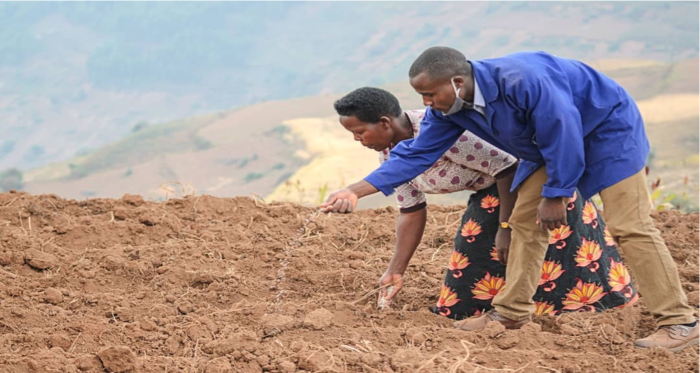
Major Outcomes
The SOILS-S2P initiative will provide improved and localized soil fertility recommendations and support better access to fertilizers and organic sources for approximately 4 to 5 million smallholders in key production systems – maize mixed, agro-pastoral, cereal-root crop mixed, and highland mixed of SSA in the next 24-36 months.
The initiative collaborates with various organizations such as ISRIC – World Soil Information, national and international research organizations, the U.S. Department of Agriculture’s Agricultural Research Service, the private sector, and civil society organizations to update and fine-tune fertilizer recommendations using spatially-derived tools.
Timeframe: 2023-2025
Projected Cost: $27 million (3 years)
Donor: USAID RFS
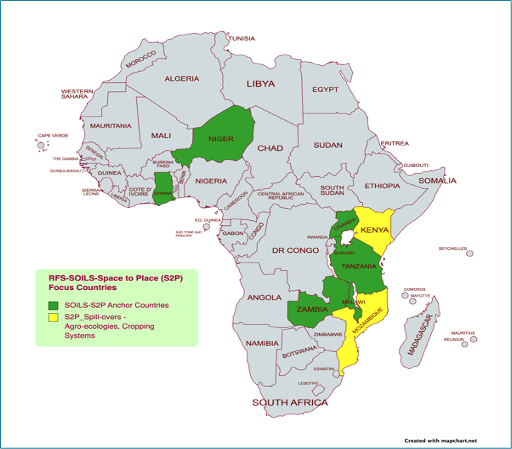
Improving nutrient use efficiency is crucial, considering the low productivity of many soils in SSA farming systems that are affected by varying physical, hydrological, and chemical constraints. With legacy soil maps and available crop response data and information, valuable soil-fertility recommendations can be derived (short term). Targeted site-specific soil fertility recommendations require up-to-date soil maps, soil data and accurate soil information, and soil testing, which can be resource-intensive in terms of time and money. Yet with existing maps and data in combination with selective, geo-referenced gap-filling research trials, that generates user sourced information on soils and farm(er) management decisions with advanced crop-soil models can assess variability and offer effective, and localized site-specific soil-fertility recommendations and solutions. Thus the SOILS-S2P initiative aims to boost nutrient use efficiency and maintain or exceed current productivity levels. The major outcome of the initiative will be developing site-specific, i.e, hyper localized, soil fertility and agronomic recommendations. These will be deployed through a pan-African space-to-place decision support tool that sustainably improves soil fertility, with a medium- and long-term focus on enhancing nutrient uptake and use efficiency through hyper-localized soil fertility and soil health recommendations.
The SOILS-S2P initiative aims to provide improved and localized soil fertility recommendations and to support better access to fertilizers and organic content sources to approximately 4 to 5 million small holders in key production systems (maize mixed, agro-pastoral, cereal-root crop mixed, and highland mixed) of sub-Saharan Africa in the next 24-36 months.
Delivery Mechanism
In order to achieve the necessary outcomes (short to medium and long term) associated with the SOILS-S2P initiative, we have adopted a two-pronged approach.
The short-term impacts of SOILS-S2P will be achieved through the enhanced delivery of targeted soil fertility innovations and management practices aimed at improving nutrient use uptake and efficiency across focus countries and crops in partnership with on-going development programs and partners. For this purpose, SOILS-S2P will link with other complementary activities that increase farmer access to affordable technologies, including private sector partnerships, financing agreements, and reduction of trade and distribution barriers, e.g., the USAID-funded Accelerated Innovation Delivery Initiative (AID-I),[1] and other donor initiatives in the focus countries with last-mile delivery partners). All SOILS-S2P activities will also complement the existing and ongoing activities sponsored through Development Assistance (Mission) on the ground to accelerate access to rapid, sustainable improvements from demand- and market-led innovations that lead to improved fertilizer use efficiency among smallholders.
The medium- and long-term impacts will be achieved through deployment of hyper-localized soil fertility recommendations and solutions aimed at smallholder farming systems geared toward optimal uptake and improved nutrient efficiency levels for better profits and yields. This will be achieved by the development and deployment of the Space to Place Decision Support Tool and its adoption through development pathways, i.e, through the private sector, government extension services, and NGO development programs for maximum impact.
*The SOILS-Space to Place project is the subject of a termination notice issued by the U.S. Department of State/USAID on February 26, 2025.
[1] The AID initiative will accelerate the delivery of technical innovations and advisory services that better enable partner countries, local small and medium enterprises (e.g., agro-dealers, market actors), and community organizations to assist smallholder farmers in maintaining or increasing food supplies in vulnerable regions despite the ongoing food, fuel, and fertilizer price crisis
Reports and Publications
Scientific Reports
Semi-Annual Reports
2017
Semi-Annual Report (October 2016-March 2017)
Semi-Annual Report (April 2017-September 2017)
2018
Semi-Annual Report (October 2017-March 2018)
Semi-Annual Report 2 (April 2018-September 2018)
2019
Semi-Annual Report (October 2018-March 2019)
Semi-Annual Report (April 2019-September 2019)
2020
Semi-Annual Report (October 2019-March 2020)
Semi-Annual Report (April 2020-September 2020)
2021
Semi-Annual Report (October 2020-March 2021)
Project Results
2023
- Distributed soil fertility technologies to nearly 8,000 farm households in Zambia, Malawi, and Tanzania.
- Conducted 814 fertilizer optimization trials at farmers’ fields.
- Conducted 27 fertilizer optimization trials in Kenya, Malawi, Mozambique, Uganda, Tanzania, and Zambia across various crops and agroecological zones.
- Developed a prototype decision support tool using legacy soil maps and information for smallholder farmers.
- Conducted a preliminary feasibility assessment on the establishment of a urea plant in Tanzania using existing natural gas resources.
- Collaborated with the Food and Agriculture Organization of the United Nations for soil mapping in Zambia.

